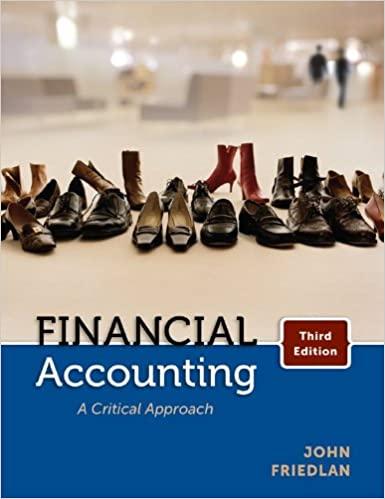At its annual meeting in June 2012, the shareholders of Rusylvia Ltd. (Rusylvia) approved a plan allowing
Question:
At its annual meeting in June 2012, the shareholders of Rusylvia Ltd. (Rusylvia) approved a plan allowing the company’s board of directors to grant stock options to certain employees as part of their compensation packages. During the year ended March 31, 2013 the board granted 200,000 options to its senior executives. The stock options were issued when Rusylvia’s shares had a market price of \($10\) per share. The exercise price of the options is \($10.25\) per share.
During fiscal 2013, Rusylvia earned revenues of \($17,250,000\), and had cost of sales of $7,600,000; selling, general, and administrative expenses of $2,400,000; interest expense of $1,750,000; other expenses of $2,950,000; and an income tax expense of \($610,000\). The economic value of the stock options when they were issued was
$900,000.
On March 31, 2012 the equity section showed the following:

On February 1, 2013 Rusylvia issued 600,000 common shares for \($10\) per share. In March 2013, Rusylvia declared and paid the dividend on the preferred shares and declared and paid a cash dividend of \($0.25\) per share on the common shares.
Required:
a. Prepare Rusylvia’s income statement for the year ended March 31, 2013, i, assuming that the options are expensed.
ii. assuming that the options aren’t expensed.
b. Calculate basic earnings per share and return on shareholders’ equity, assuming the value of the stock options is expensed when granted, and assuming it isn’t expensed.
c. What effect do the two treatments for employee stock options have on cash flow?
d. Which accounting approach do you think Rusylvia’s managers would prefer?
Explain.
e. Which approach do you think gives a better representation of Rusylvia’s economic performance?
f. If Rusylvia didn’t accrue the cost of the options in its financial statements, what information would you want disclosed about them? Explain.
Step by Step Answer:






